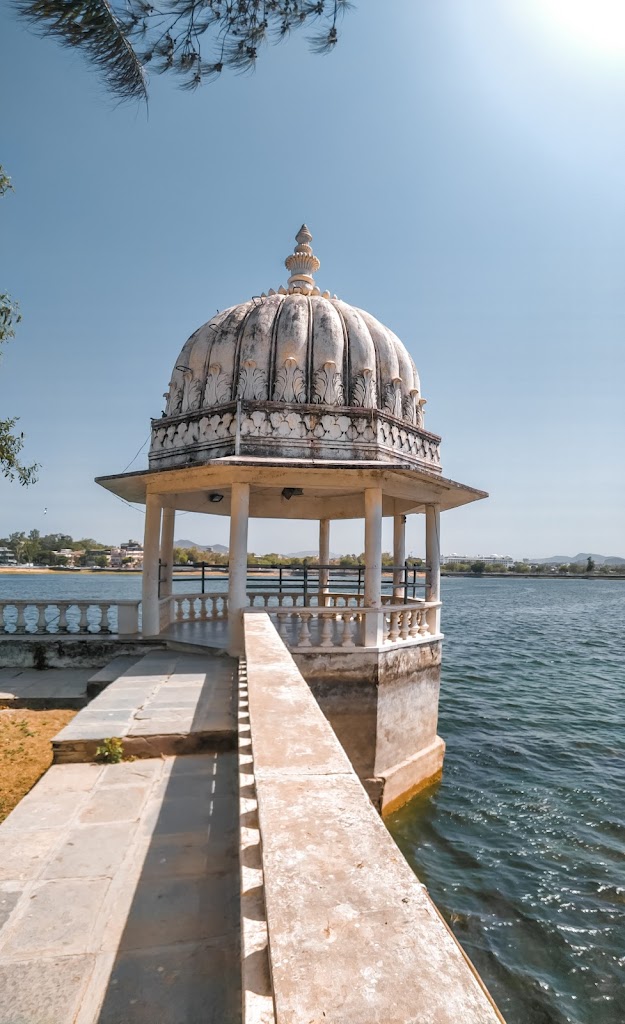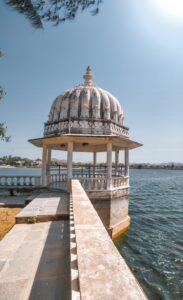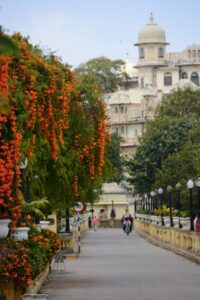By Prashant V Shrivastava – Welcome to our comprehensive guide on Udaipur weather, where we provide you with all the essential information you need to plan your visit to this enchanting city. Udaipur, known as the “City of Lakes” and located in the royal state of Rajasthan, India, offers a rich cultural heritage and breathtaking landscapes. Understanding the Udaipur weather patterns in Udaipur is crucial for optimizing your travel experience.
This article will delve into Udaipur’s climate, seasons, and the best time to visit this magnificent city.
Udaipur Weather: An Overview
Udaipur experiences a tropical climate with three seasons: summer, monsoon, and winter. Each season brings unique charm to the city, and understanding the Udaipur weather conditions will help you plan your itinerary accordingly.
1. Udaipur Weather in Summer (April to June)
During the summer months, Udaipur witnesses hot and scorching Udaipur weather. The temperature can soar up to **45 degrees Celsius** (113 degrees Fahrenheit) or even higher, making it quite challenging for outdoor activities. It is advisable to avoid visiting Udaipur during this season unless you can tolerate extreme heat. However, if you find yourself in Udaipur during summer, stay hydrated, wear light and breathable clothing, and avoid venturing out during peak afternoon hours.
2. Monsoon (July to September)
The monsoon season in Udaipur brings relief from the scorching summer heat as the city receives moderate to heavy rainfall. The average temperature during this season ranges between **25 to 35 degrees Celsius** (77 to 95 degrees Fahrenheit). The monsoon showers rejuvenate the surroundings, enhancing the natural beauty of Udaipur. Exploring the city’s majestic palaces, such as the City Palace and Lake Palace, during this time can be a delightful experience. However, remember that heavy rainfall may lead to occasional disruptions in outdoor activities, so it is recommended to check the Udaipur weather forecast before planning your day.
3. Winter (October to March)
Winter in Udaipur is the most pleasant season, with comfortable temperatures ranging from **10 to 25 degrees Celsius** (50 to 77 degrees Fahrenheit). The city experiences mild to cool weather, ideal for outdoor sightseeing and exploring Udaipur’s architectural wonders. This season attracts many tourists, so making advance bookings for accommodations and popular tourist attractions is advisable.
Best Time to Visit Udaipur
While Udaipur can be visited throughout the year, the best time to plan your trip is during the winter season, from October to March. The pleasant weather during this time allows you to enjoy the city’s rich heritage, vibrant festivals, and picturesque views without being affected by extreme temperatures. However, if you love the monsoon ambiance and don’t mind occasional rain showers, the monsoon season can also be a beautiful time to experience Udaipur’s charm.
Packing Essentials
To ensure a comfortable and enjoyable trip to Udaipur, here are some essential items to pack:
- Lightweight and breathable clothing for the summer season
- Sunscreen, sunglasses, and a hat to protect yourself from the scorching sun
- Umbrella or raincoat for the monsoon season
- Sweaters or jackets for the winter season, especially during the evenings
- Comfortable walking shoes for exploring the city’s attractions
Udaipur’s weather plays a significant role in shaping your travel experience. Whether you visit during the colorful winter festivals or the refreshing monsoon showers, Udaipur never fails to mesmerize its visitors. By understanding the weather patterns and planning accordingly, you can make the most of your trip to this majestic city.
Always check the latest weather updates before visiting Udaipur, as climate conditions may vary from year to year. Now that you have all the essential information about Udaipur weather, it’s time to embark on your unforgettable journey to the “City of Lakes.”
Photo by Dipesh Meena, Rohit Gangwar


